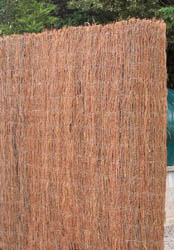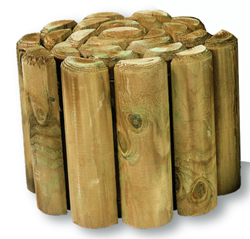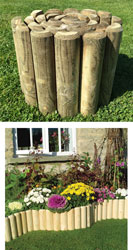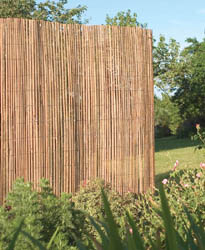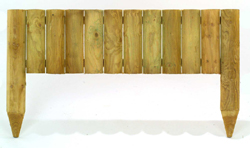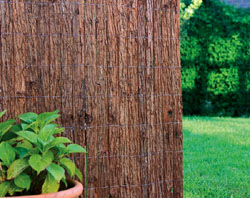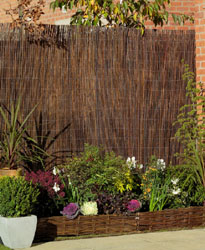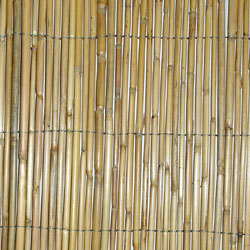
01757 28939701757 289397

UK Farm Supplies Ellerton, York, United Kingdom,
House and Gardens
Tropical Gardens
We have just returned home following a major holiday in Australia and New Zealand. With a three day visit to Singapore at the front, and a four day visit to friends in Hong Kong on our return, we have so many memories, with gardens being a major point of interest during the whole time. We started in Singapore, an island city state which sits a mere one degree north of the equator.
This tropical paradise is a self professed City in a Garden. Many of the city streets have generous tree, shrub and flower plantings along both the centre and the margins of the carriageways, and with overhead bridges and many buildings also being clad in greenery. With its tropical climate producing average temperatures of around 31 degrees C, and an annual rainfall of over 2300mm per annum, it is not surprising that plants grow so quickly and so large. There seems to be a competitive approach to planting, with shops, hotels, homes and offices all contributing to the overall effect. Window boxes and pavement planters add to the green surroundings. This is a deliberate ploy orchestrated by the government with the declared intent to help clean the atmosphere, and to keep the city cool under the canopy of mostly native trees, and an increasingly extensive network of green places is creating the ability to pass from one park area to another via green corridors, with pathways and cycleways facilitating this passage. This ever growing Park Connector Network certainly makes travelling within the city very pleasant and enjoyable, with many flowering plants brightening the journey.
The Round Island Route is to be a circular corridor, linking with the existing and proposed network of green Park Connectors, the first section due for completion this year following a coastal route ending at the Gardens by the Bay. This circular route was the result of considerable public consultation with many suggestions being submitted by Singapore residents. It seems certain that the positive response is largely due to the public having been involved in the planning process. The concept of a City in a Garden is a bold one, but it does seem to be a successful one. We were impressed that even within the airport environs, and all along the freeway to the city there was plentiful planting of trees and lesser plants, creating such a positive and attractive impression, in addition to the invisible benefits.
This tropical paradise is a self professed City in a Garden. Many of the city streets have generous tree, shrub and flower plantings along both the centre and the margins of the carriageways, and with overhead bridges and many buildings also being clad in greenery. With its tropical climate producing average temperatures of around 31 degrees C, and an annual rainfall of over 2300mm per annum, it is not surprising that plants grow so quickly and so large. There seems to be a competitive approach to planting, with shops, hotels, homes and offices all contributing to the overall effect. Window boxes and pavement planters add to the green surroundings. This is a deliberate ploy orchestrated by the government with the declared intent to help clean the atmosphere, and to keep the city cool under the canopy of mostly native trees, and an increasingly extensive network of green places is creating the ability to pass from one park area to another via green corridors, with pathways and cycleways facilitating this passage. This ever growing Park Connector Network certainly makes travelling within the city very pleasant and enjoyable, with many flowering plants brightening the journey.
The Round Island Route is to be a circular corridor, linking with the existing and proposed network of green Park Connectors, the first section due for completion this year following a coastal route ending at the Gardens by the Bay. This circular route was the result of considerable public consultation with many suggestions being submitted by Singapore residents. It seems certain that the positive response is largely due to the public having been involved in the planning process. The concept of a City in a Garden is a bold one, but it does seem to be a successful one. We were impressed that even within the airport environs, and all along the freeway to the city there was plentiful planting of trees and lesser plants, creating such a positive and attractive impression, in addition to the invisible benefits.
Gardens at Birkheads
There are a number of different areas in the garden, some in the form of garden rooms and others which just flow one into the other. The first area that really grabbed our attention was the Bowes Railway garden, an 8 m square hedged area that is treated a bit like a parterre with honeysuckle growing up small trellises at the corners and most of the infill being mulched with broken slate. Railway sleepers separate the areas and a lot of the planting is evergreen things such as clipped box, golden yew, santolina and so on. A few bits of railway memorabilia complete the picture. The overall effect was very good.
Winding down along the pink and purple border you reach a bee and butterfly circle another area with broken slate mulch and the paths edged with granite setts most attractive. The planting here is obviously aimed at the insect world, plants such as buddleia, sedum spectabile, roses and a large variety of thymes.
At the bottom of the garden is a wildflower meadow and a wishing tree” attach a key to the tree and make a wish we are told it has a very good success rate!
Coming back up the other side of the garden along the late summer border and a rodgersia bed you reach a series of garden rooms. The first a meditation garden, the second spring woodland and the final one Treasure Island, complete with treasure!
Gardens at Mottistone
Our first port of call was the Lower Garden and turf maze, the latter was at the time entertaining a number of younger visitors. The Lower garden has a Mediterranean or subtropical feel to it with exotic and architectural leaves being very prominent, plants such as the tender melianthus major, a number of less frequently seen eryngiums with their thistle-like flowers and lethal leaves, and a variety of coloured phormiums.
The star of the show, however, was an alstroemeria Indian Summer, its red and yellow flowers set against the dark almost bronzy leaves make it look really spectacular and definitely tropical. Surprisingly it is hardy in most of the UK, it also makes an excellent long-lasting cut flower. Two pieces of advice, plant in a reasonable sized drift, and when flowers start to go over, pull them (the flower stems not the plant!) out, the damage created will promote further flowering.
Some steps nicely planted with erigeron, the multicoloured daisy lead up to a rose garden (sadly, rain damaged when we visited) and hence to a most impressive double herbaceous border. Many of the plants here in late June were in the purple area of the spectrum, but there was much interest from the various forms of flower - a tall spiky one that was new to me was phytolacca laka boom, otherwise known as pokeweed.
Gardens at Osborne House
Most people visit Osborne House just outside Cowes on the Isle of Wight, to see the house which was Queen Victoria and Prince Albert’s favourite getaway. Indeed they both took great interest and were directly involved in the planning of the garden, Albert particularly spending many hours high in the tower gesticulating to gardeners to position the trees that were being planted.
Victoria’s main interest was in the parterres, statuary and fountains that were to the north of the house with its distant views of the Solent. These are indeed very good examples of their type, and if this is what you like then look very carefully at the planting schemes, they are innovative and very effective. Whilst this view towards the sea is very impressive I have to say I preferred the rest of the grounds.
There is a walled garden which was and is used for fruit, vegetables and cut flowers, the planting here is strictly utilitarian rather than ornamental, but it is still interesting to look at the plants themselves and one thing that struck me was that leeks were planted out in small clumps of half a dozen or so plants I never did discover why. There is a very amusing cameo in the south west corner in the old pig sty are three topiary pigs, grown in quite small containers!
For my taste the bed outside the eastern wall of the walled garden is the pick of the garden. The planting here is very good indeed with a huge variety of architectural plants as well as great use of colour both of foliage and flowers. Perhaps the stars of the show are echiums, some very large phormiums of various colours, alliums, pink lychnis and melianthus major. The latter, having very impressive large jagged leaves, is not sufficiently hardy to grow in most of the country; if you want to create a similar effect use cardoon or globe artichoke, both of which have edible parts as an added bonus.
Many other beds are all quite good, as are the walks through the estate and by the sea. All in all a decent garden, but if you are not interested in the house or the parterre, spend the extra time at Ventnor botanic!
Victoria’s main interest was in the parterres, statuary and fountains that were to the north of the house with its distant views of the Solent. These are indeed very good examples of their type, and if this is what you like then look very carefully at the planting schemes, they are innovative and very effective. Whilst this view towards the sea is very impressive I have to say I preferred the rest of the grounds.
There is a walled garden which was and is used for fruit, vegetables and cut flowers, the planting here is strictly utilitarian rather than ornamental, but it is still interesting to look at the plants themselves and one thing that struck me was that leeks were planted out in small clumps of half a dozen or so plants I never did discover why. There is a very amusing cameo in the south west corner in the old pig sty are three topiary pigs, grown in quite small containers!
For my taste the bed outside the eastern wall of the walled garden is the pick of the garden. The planting here is very good indeed with a huge variety of architectural plants as well as great use of colour both of foliage and flowers. Perhaps the stars of the show are echiums, some very large phormiums of various colours, alliums, pink lychnis and melianthus major. The latter, having very impressive large jagged leaves, is not sufficiently hardy to grow in most of the country; if you want to create a similar effect use cardoon or globe artichoke, both of which have edible parts as an added bonus.
Many other beds are all quite good, as are the walks through the estate and by the sea. All in all a decent garden, but if you are not interested in the house or the parterre, spend the extra time at Ventnor botanic!
Gardens at Aberglasney
The gardens have a lot of interest, not least of which is a magnificent Cloister garden with beautifully restored arches to two sides and a copy of a grass parterre garden painted in 1620 in the middle. The origins of this garden are thought to be Jacobean.
Walking through the walled and pool gardens, which are most attractive themselves one reaches some of the servants quarters which are currently being restored and eventually finds oneself overlooking a wooded valley which is being developed with a series of paths and extensive planting, when we were there in April the season was not showing the plants to their ultimate but in mid-summer when the gunneras have grown up and many of the flowers are at their best it will be quite stunning.
Making our way back towards the house through a meadow full of snakes head fritillaries (which do seed and spread quite easily) we went through the Alpinum and up to Bishop Rudd’s Walk and the Asiatic Garden where there are a host of very well chosen plants, especially azaleas, camellias, epimediums and erythroniums.
Back at the house there is another highlight, the Ninfarium, named after the restored village garden in southern Italy. This is basically an old part of the house which was stabilised rather than restored, then roofed in with glass sheeting, and in conditions of controlled temperature and humidity used to grow a range of exotic plants including orchids, magnolias, palms and cycads. A very original and exciting display.
Walking through the walled and pool gardens, which are most attractive themselves one reaches some of the servants quarters which are currently being restored and eventually finds oneself overlooking a wooded valley which is being developed with a series of paths and extensive planting, when we were there in April the season was not showing the plants to their ultimate but in mid-summer when the gunneras have grown up and many of the flowers are at their best it will be quite stunning.
Making our way back towards the house through a meadow full of snakes head fritillaries (which do seed and spread quite easily) we went through the Alpinum and up to Bishop Rudd’s Walk and the Asiatic Garden where there are a host of very well chosen plants, especially azaleas, camellias, epimediums and erythroniums.
Back at the house there is another highlight, the Ninfarium, named after the restored village garden in southern Italy. This is basically an old part of the house which was stabilised rather than restored, then roofed in with glass sheeting, and in conditions of controlled temperature and humidity used to grow a range of exotic plants including orchids, magnolias, palms and cycads. A very original and exciting display.
Gardens at Hestercombe
The house here, although grand, does not have a particularly significant or interesting history, the most notable point is an archway dating back to the late thirteenth century. The garden, however, is a different matter. The original garden was laid out in the middle of the eighteenth century by a gentleman called Coplestone Warre Bampfylde surely a significant claim to fame if there were no other. It is however what happened later that is important.
In 1904 the Portman family who lived there at the time commissioned Sir Edwin Lutyens (who designed the Cenotaph as well as many important buildings both in the UK and India) to design a formal garden to sit within the original landscaping. This he did, and then got Gertrude Jekyll to plant it up, thus creating probably the best example of an Arts and Crafts garden anywhere in the world.
From the house the garden at first seems quite limited but with excellent distant views, but as you walk away from the house you become aware that there is another level lower down and the higher level is working just like an infinity pool. As you walk around the lower levels, you quickly realise that Mr.Warre Bampfylde was a very talented designer producing many changes of atmosphere as you move through the various features. As might be expected from the contours strategically placed viewing seats and a myriad of cascades are recurring features.
This garden would be good if it stopped ther but when you add the seamless way in which Lutyens added the formal garden and the inspiring planting by Jekyll you have a masterpiece.
Add to this a mill (which works on specific days), a plant centre, a tea room with a perfect view, and a second hand bookshop, what is not to like?
Garden at Harlow Carr
The garden covers 68 acres of a fairly steep sided valley.
We have visited Harlow Carr a number of times, and in the past have not found it very inspiring, but our recent visit with a hoard of grandchildren was extremely successful. Not only were the play areas original and exciting for the children, but we found a massively improved garden full of excellent planting, fascinating sculpture and interesting events. We plan to go back on our own very soon.
Probably the most notable single feature of the garden is the streamside, one of the longest of its type in the country. This has grown up to maturity since our last visit and now displays a very impressive range of plants in a very well maintained environment. The overall effect would have been hard to imagine a few years ago. For me the next best feature was the series of main borders leading up the valley side towards the buildings, in late September this was still full of colour with very little hint of the approach of autumn.
Towards the top of the hill are the vegetable garden and the scented garden which again were in the very best of health and quite inspirational. The small foliage garden, also in this area was also worth a visit. The Alpine zone and Alpine house are a must-see, definitely another highlight.
On the other side of the valley the emphasis is on woodland with many long walks, too long for little legs that had spent 2 hours playing on various castles, log walks and slides!
Being an RHS garden there is much of educational value, an extremely good library resource, a teaching garden and a series of gardens which show how gardening has changed over the years.
We have visited Harlow Carr a number of times, and in the past have not found it very inspiring, but our recent visit with a hoard of grandchildren was extremely successful. Not only were the play areas original and exciting for the children, but we found a massively improved garden full of excellent planting, fascinating sculpture and interesting events. We plan to go back on our own very soon.
Probably the most notable single feature of the garden is the streamside, one of the longest of its type in the country. This has grown up to maturity since our last visit and now displays a very impressive range of plants in a very well maintained environment. The overall effect would have been hard to imagine a few years ago. For me the next best feature was the series of main borders leading up the valley side towards the buildings, in late September this was still full of colour with very little hint of the approach of autumn.
Towards the top of the hill are the vegetable garden and the scented garden which again were in the very best of health and quite inspirational. The small foliage garden, also in this area was also worth a visit. The Alpine zone and Alpine house are a must-see, definitely another highlight.
On the other side of the valley the emphasis is on woodland with many long walks, too long for little legs that had spent 2 hours playing on various castles, log walks and slides!
Being an RHS garden there is much of educational value, an extremely good library resource, a teaching garden and a series of gardens which show how gardening has changed over the years.
Gardens at Holehird
The second best of our Lake District gardens, Holehird belongs to the Lakeland Horticultural Society and is situated on Patterdale Road in Windermere. The 19 acres are maintained purely by volunteers and supported solely by donations so do please give generously if you visit.
There is a walled garden where you are most likely to start, and here re to be found a number of beds planted up with extremely well conceived planting plans if you feel unsure about how to develop a scheme for your own garden you could do much worse than visiting Holehird and see how and why their schemes work, and copy or adjust these.
The gardeners here maintain no less than four National Collections, Astilbe, Daboecia, Mecanopsis and Polystichum, and all plants are well labelled so you will be able to easily identify anything that you like the look of.
Outside the walled garden are three larger areas for you to visit. The first is the Upper Garden, basically a rockery and terraced garden on quite a steep slope. The careful planning here ensures that you will almost certainly not tread every path and see every plant unless you stay for a very long time. The clever use of the contours and considered planting means that you are led ever onward to discover new areas really very impressive.
The Lower Garden is a more gentle route (but still not to be attempted by wheelchairs or handicapped walkers) and takes you down the hillside through a wooded area with planting and round the lower parts of the garden attached to the nearby Cheshire Home for the handicapped.
The final part includes alpine houses, a greenhouse and propagation beds where the extensive work that goes on here can be viewed.
There is a walled garden where you are most likely to start, and here re to be found a number of beds planted up with extremely well conceived planting plans if you feel unsure about how to develop a scheme for your own garden you could do much worse than visiting Holehird and see how and why their schemes work, and copy or adjust these.
The gardeners here maintain no less than four National Collections, Astilbe, Daboecia, Mecanopsis and Polystichum, and all plants are well labelled so you will be able to easily identify anything that you like the look of.
Outside the walled garden are three larger areas for you to visit. The first is the Upper Garden, basically a rockery and terraced garden on quite a steep slope. The careful planning here ensures that you will almost certainly not tread every path and see every plant unless you stay for a very long time. The clever use of the contours and considered planting means that you are led ever onward to discover new areas really very impressive.
The Lower Garden is a more gentle route (but still not to be attempted by wheelchairs or handicapped walkers) and takes you down the hillside through a wooded area with planting and round the lower parts of the garden attached to the nearby Cheshire Home for the handicapped.
The final part includes alpine houses, a greenhouse and propagation beds where the extensive work that goes on here can be viewed.
Gardens of Interest
Visit to Welsh Botanic Gardens
The undoubted star of the show is the great glasshouse, a fitting tribute to William Paxton who used to live in what is now the conference centre. This impressive dome is home to a wide range of Mediterranean plants from Chile and South Africa as well as the European Mediterranean. There are walkways on two levels which will ensure you can get a good look at every plant on show.
There is a double walled garden which contains a wide range of indigenous plants, including vegetables. After the appalling spring we’ve had this year it was interesting to note that this garden was as far behind normal as our own garden in Yorkshire. Also in the double walled garden is a tropical house with a fairly small but very well laid out selection of heat loving subjects.
Another walled garden laid out in the form of a double helix in front of the conference centre aims to give the visitor an introduction to genetics and plant breeding. The rest of Paxton’s house which is no longer standing is outlined behind the centre.
An interesting art installation, the Ghost Forest, is formed from hardwood trees felled in Ghana, boards tell their stories and highlight the problems of deforestation in the tropics.
These are just some of the aspects of this large and varied garden, there are many other educational displays such as conservation, an apothecaries garden (and shop), a bee garden, a geology display of typical Welsh rocks.
All in all a very impressive and varied garden, providing much interest to any gardener. Better funding would allow the keen and hardworking staff to be augmented which would improve the maintenance of some of the more neglected areas.
Gresgarth Hall Gardens
The approach to the house is impressive with yew hedges on either side, you confront a circular island of grass and flowers, guarded by an impressive stone boar, a copy of the Roman Calydonian Boar, chosen a Gresgarth means Boar Yard in Norse. The most actively gardened parts are close to the house and include impressive herbaceous beds, bounded by more yew hedging, a kitchen garden as well as less formal wild gardens and a lilac walk.
Pride of place has to go to the terrace and the lake which are exceptionally beautiful; the lake is long and at first glance is easily mistaken for a fair sized river, part of the left bank gives the impression of being an island due to clever contouring and planting. All the planting, including my favourite a cornus kousa, around the lake make for stunning views from many places, perhaps particularly from the terrace close to the house.
Further afield are some very pleasant walks through semi cultivated woodlands, where many interesting trees have been planted and in late Spring the rhododendrons and azaleas are extremely impressive. Statuary and constructs at various points keep the walks as a constant source of surprise.
One interesting feature in the more formal parts of the garden are the ornamental cobbling panels set into hard pathing materials which depict a bee, a dragonfly, family zodiacs, wind and waves amongst others, all created out of coloured stone mosaic.
Docton Mill Gardens
This always seems to be a more normal garden than most, but what is exceptional, and you should really study this, is the planting both the density and the planting groups, in terms of both colour and form that have been used and give such a fabulous display I challenge you to find better!
Docton Mill is in north Devon on the Hartland Peninsula, pretty much due north of Bude and due west of Bideford, but be warned it is only open between March and early October, and is not suitable for wheelchairs or seriously handicapped walkers. The Mill is situated in a steep sided valley about half a mile from the sea.
The Mill was originally a flour mill, but in 1910 was converted to generate electricity for the valley, and it still produces electricity today. The current owner bought the Mill at the end of the 1970’s and set about renovating both the Mill and the gardens.
The result is incredible, the highlights are the Bog Garden which is mentioned in Rosemary Verey’s book Good Planting you will see why. In Caleb’s field there is a very large herbaceous border, again with a stunning planting scheme this time primarily silver and mauve. The River Walk has naturalised bulbs, forming an absolute carpet of daffodils, bluebells and ransomes in turn.
While here you should not miss the cream tea, voted the best in Devon. There is also the ubiquitous plant sales opportunity good quality at a fair price.
The undoubted star of the show is the great glasshouse, a fitting tribute to William Paxton who used to live in what is now the conference centre. This impressive dome is home to a wide range of Mediterranean plants from Chile and South Africa as well as the European Mediterranean. There are walkways on two levels which will ensure you can get a good look at every plant on show.
There is a double walled garden which contains a wide range of indigenous plants, including vegetables. After the appalling spring we’ve had this year it was interesting to note that this garden was as far behind normal as our own garden in Yorkshire. Also in the double walled garden is a tropical house with a fairly small but very well laid out selection of heat loving subjects.
Another walled garden laid out in the form of a double helix in front of the conference centre aims to give the visitor an introduction to genetics and plant breeding. The rest of Paxton’s house which is no longer standing is outlined behind the centre.
An interesting art installation, the Ghost Forest, is formed from hardwood trees felled in Ghana, boards tell their stories and highlight the problems of deforestation in the tropics.
These are just some of the aspects of this large and varied garden, there are many other educational displays such as conservation, an apothecaries garden (and shop), a bee garden, a geology display of typical Welsh rocks.
All in all a very impressive and varied garden, providing much interest to any gardener. Better funding would allow the keen and hardworking staff to be augmented which would improve the maintenance of some of the more neglected areas.
Gresgarth Hall Gardens
The approach to the house is impressive with yew hedges on either side, you confront a circular island of grass and flowers, guarded by an impressive stone boar, a copy of the Roman Calydonian Boar, chosen a Gresgarth means Boar Yard in Norse. The most actively gardened parts are close to the house and include impressive herbaceous beds, bounded by more yew hedging, a kitchen garden as well as less formal wild gardens and a lilac walk.
Pride of place has to go to the terrace and the lake which are exceptionally beautiful; the lake is long and at first glance is easily mistaken for a fair sized river, part of the left bank gives the impression of being an island due to clever contouring and planting. All the planting, including my favourite a cornus kousa, around the lake make for stunning views from many places, perhaps particularly from the terrace close to the house.
Further afield are some very pleasant walks through semi cultivated woodlands, where many interesting trees have been planted and in late Spring the rhododendrons and azaleas are extremely impressive. Statuary and constructs at various points keep the walks as a constant source of surprise.
One interesting feature in the more formal parts of the garden are the ornamental cobbling panels set into hard pathing materials which depict a bee, a dragonfly, family zodiacs, wind and waves amongst others, all created out of coloured stone mosaic.
Docton Mill Gardens
This always seems to be a more normal garden than most, but what is exceptional, and you should really study this, is the planting both the density and the planting groups, in terms of both colour and form that have been used and give such a fabulous display I challenge you to find better!
Docton Mill is in north Devon on the Hartland Peninsula, pretty much due north of Bude and due west of Bideford, but be warned it is only open between March and early October, and is not suitable for wheelchairs or seriously handicapped walkers. The Mill is situated in a steep sided valley about half a mile from the sea.
The Mill was originally a flour mill, but in 1910 was converted to generate electricity for the valley, and it still produces electricity today. The current owner bought the Mill at the end of the 1970’s and set about renovating both the Mill and the gardens.
The result is incredible, the highlights are the Bog Garden which is mentioned in Rosemary Verey’s book Good Planting you will see why. In Caleb’s field there is a very large herbaceous border, again with a stunning planting scheme this time primarily silver and mauve. The River Walk has naturalised bulbs, forming an absolute carpet of daffodils, bluebells and ransomes in turn.
While here you should not miss the cream tea, voted the best in Devon. There is also the ubiquitous plant sales opportunity good quality at a fair price.


